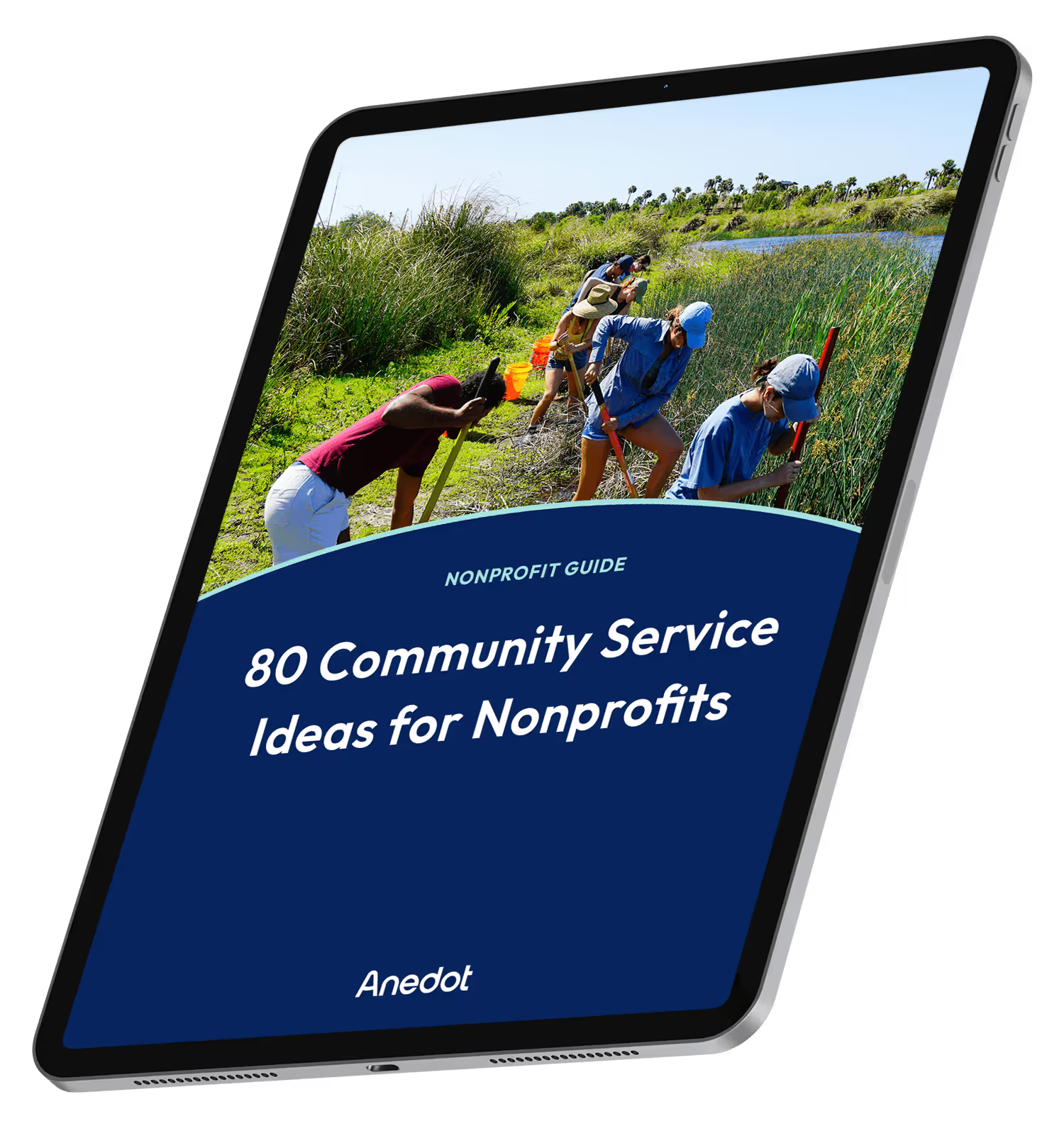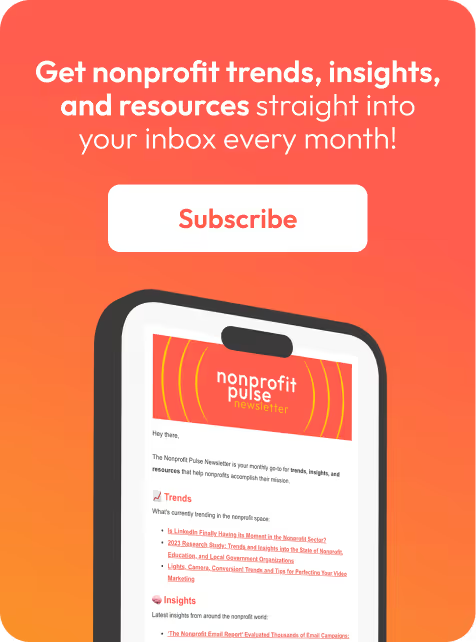We know the value and importance of maintaining transparency here at Anedot. This sentiment is true for any entity, but especially for organizations and nonprofits relying on donor support.
Read on as we explore the necessity of organizational transparency and steps you can take to promote a culture of openness throughout your nonprofit.
Why organizational transparency matters

The idea of organizational transparency is simple: conduct your business openly, clearly, and with accountability. And while the concept seems like an obvious choice, operating with true organizational transparency requires intentionality. If your nonprofit can create a culture of transparency, you’ll find that you earn greater trust –– and support –– from your community.
Transparency helps build a culture of integrity and ethical practices within your organization. When you open the door for people to see how and why you do things the way you do, you create accountability that leads to more intimate involvement from those supporting your cause.
Your nonprofit relies on donors, advocates, volunteers, and other means of support to accomplish your goals. Earning support, whether financial or otherwise, requires you first to earn trust. Organizational transparency empowers you to build trusting relationships by giving individuals a complete picture of how you run or nonprofit.
No matter how you look at it, organizational transparency can only benefit your organization, employees, and those you serve. Below, we outline six steps to improve nonprofit transparency, so you can begin reaping some of those benefits starting now.
6 steps to improve nonprofit transparency
1. Maintain a current site and directory

Individuals seeking information about your organization will find themselves on your website. Your nonprofit’s website should provide all the information available regarding your nonprofit and the work you do.
Regardless of the age of your organization, you need to conduct routine site updates, including media, beneficiary stories, and service campaigns. As board members, leadership, and staff change, make the corresponding changes on your site.
In addition to refreshing your content regularly, remember to maintain a current directory of contact information. When donors or interested parties want to discuss support opportunities, you want to make contacting a team member as simple as possible.
Updating your site and directory might not feel like a matter of urgency when planning for organizational transparency. Still, if your information is outdated, you communicate that you’re not running your nonprofit efficiently or professionally.
Keep all information up to date, and people will see that you take your work, vision, and supporters seriously.
2. Communicate openly, honestly, and quickly

When individuals reach out to a business or organization, they expect near-immediate responses. And while you’re likely not able to reply at all hours of the night, speedy, open communication, excellent customer service will go far in maintaining organizational transparency.
Your nonprofit probably has multiple channels through which individuals can reach out, ask questions, and offer support:
- Social channels, including page posts, comments, and private messaging
- The good old-fashioned phone call and voice mail
When people donate time, energy, and financial resources, they want access to open lines of communication –– as they should. The above channels are must-haves for your nonprofit.
Different demographics prefer varied communication channels.
By creating multiple paths for them to get in touch with your team, you cultivate positive relationships and a positive perception of your organization.
But with so many channels, you must ensure your team keeps up with them.
Assign individuals to monitor each channel where necessary to ensure no calls, voicemails, or messages slip through the cracks and that every note or question receives a response. Replies or feedback should be quick, sincere, and kind, regardless of the tone or messaging sent to you.
3. Enact and uphold accountability policies

While some transparency best practices are just that –– practices, you’ll also want to have some of your practices written into official policies. All nonprofits should have public accountability policies, so it’s clear that your organization values ethics and integrity at every turn.
Below are a few policies you should consider drafting to foster transparency and accountability.
Conflict of Interest Policy
Within the nonprofit world, there is always a chance for a conflict of interest to occur. Drafting a written conflict of interest policy outlines clear steps your organization will take should a staff or board member potentially benefit from a transaction. This policy prioritizes your nonprofit's good over the interests of an individual affiliated with your organization.
Fundraising Policy
Fundraising practices may be the most debated aspect of nonprofit ethics. Create a fundraising policy to outline your organization's guidelines when engaging potential donors and soliciting donations for nonprofit fundraising.
Privacy Policy
While you want to foster transparency whenever possible within your organization, the same isn’t true for donor information. Your privacy policy should include how you’ll handle donor data such as names, addresses, personal information, etc.
4. Publish your annual reports

If you receive donations of any kind, you need to create and publish an annual report. You have a responsibility to your donors and the public regarding the resources you take in and how you use them.
You can (and should) make your tax records public. But very few individuals will take the time to peruse your tax forms to decipher how you’ve utilized your resources and gifts. An annual report not only makes this information available, but it also makes the data accessible.
Proactively publishing your annual report in a simple, easily-consumable format shows you want people to read your report and that you’ve nothing to hide.
Publishing does more than promote financial transparency.
An annual report provides an opportunity to showcase your successes and accomplishments over the last year. They highlight how donor support has made a tangible difference in the communities you serve and the projects you carry out.
Your report is a great way to maintain transparency in celebrating and sharing what you’ve accomplished while threading your branding and nonprofit storytelling throughout your document.
5. Maintain a transparent board structure

Your board members drive decision-making and guide the path of your nonprofit or organization. Part of maintaining transparent practices includes listing your board members on your site. Board membership should never be a secret.
The IRS requires you to list nonprofit board members on certain tax forms. As in your annual reporting, it’s best to take a proactive approach and maintain public, transparent, and easily accessible board structure information. Proactive transparency communicates that your organization operates with integrity and honesty.
6. Join a standards program

Standards programs give your organization or nonprofit legitimacy in the eyes of the public. These programs provide a seal of approval to organizations that follow their unique set of guidelines. They signal to the public that an approved organization is trustworthy.
These accreditations are a verifiable and effective way to prove to stakeholders that you are who you say you are, earning increased trust and support and ensuring individuals that their financial contributions will be used ethically.
Below we list and link to a few popular nonprofit accreditation agencies:
All the above agencies provide recognizable, nationwide affirmation of your nonprofit’s legitimacy, transparency, and ethical practices.
Transparency and your nonprofit's success

Transparency breeds trust and buy-in, especially in the nonprofit sector. By prioritizing a proactive openness with a watching audience, you’ll not only earn trust; you’ll cultivate impactful relationships that can significantly benefit your organization.
Organizational transparency factors into your fundraising success. The two are inextricably linked. When you’re ready to explore giving tools that make receiving gifts and donations simple, reach out to our team.

80 Community Service Ideas for Nonprofits


























